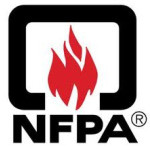- 업종: Fire safety
- Number of terms: 98780
- Number of blossaries: 0
- Company Profile:
Established in 1896, NFPA's mission is to reduce the worldwide burden of fire and other hazards on the quality of life by providing and advocating consensus codes and standards, research, training, and education.
Automatic fire-extinguishing systems and portable fire extinguishers provided for the protection of grease removal devices, hoods, duct systems, and cooking equipment, and listed for such use.
Industry:Fire safety
Automatic controls (including relays, switches, and other auxiliary equipment used in conjunction to form a safety control system) that are intended to prevent unsafe operation of the controlled equipment.
Industry:Fire safety
Audible or visible signaling to occupants or inhabitants of the area protected by the fire alarm system.
Industry:Fire safety
Audible or visible signaling only to those persons directly concerned with the implementation and direction of emergency action initiation and procedure in the area protected by the fire alarm system.
Industry:Fire safety
Atmospheric air or a dry gas that is admitted into the compression chamber of rotary mechanical pumps to prevent condensation of vapors in the pump oil by maintaining the partial pressure of the condensable vapors below the saturation value.
Industry:Fire safety
Atmospheres containing solids, liquids, vapors, or gases at concentrations that will burn or explode if ignited.
Industry:Fire safety
Atmospheres containing other combustible dusts, including flour, grain, wood flour, plastic, and chemicals.
Industry:Fire safety
Atmospheres containing combustible metal dusts, including aluminum, magnesium, and their commercial alloys, or other combustible dusts whose particle size, abrasiveness, and conductivity present similar hazards in the use of electrical equipment.
Industry:Fire safety
Atmospheres containing combustible carbonaceous dusts that have more than 8 percent total entrapped volatiles (see ASTM D 3175, Standard Test Method for Volatile Matter in the Analysis Sample of Coal and Coke, for coal and coke dusts) or that have been sensitized by other materials so that they present an explosion hazard. Coal, carbon black, charcoal, and coke dusts are examples of carbonaceous dusts.
Industry:Fire safety
Atmospheres containing acetylene, hydrogen, or flammable gas, flammable liquid produced vapor, or combustible liquid produced vapor mixed with air that may burn or explode, having either a maximum experimental safe gap (MESG) value less than or equal to 0. 50 mm or minimum igniting current ratio (MIC ratio) less than or equal to 0. 45.
Industry:Fire safety
